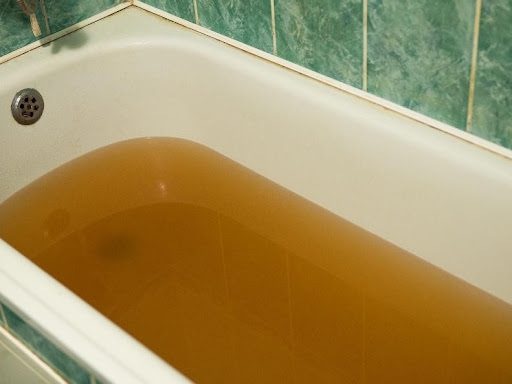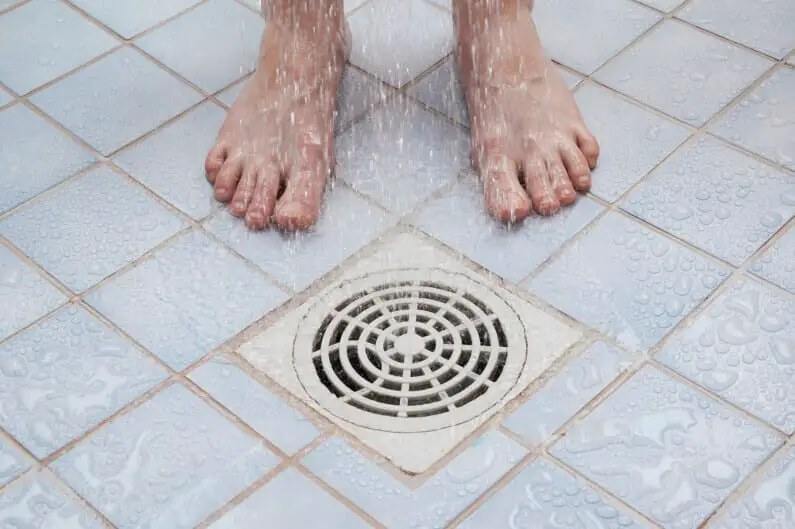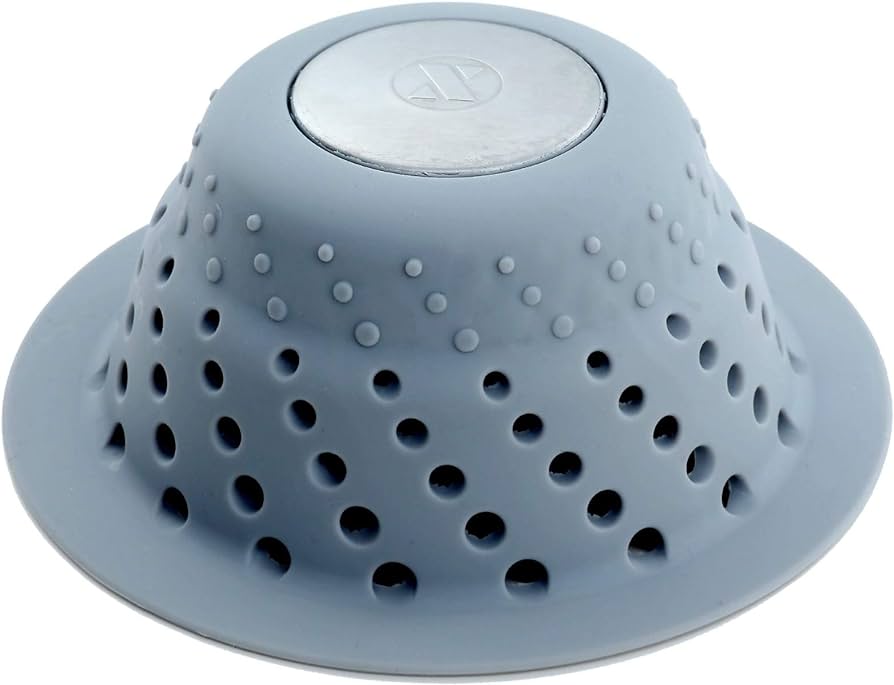Experiencing a toilet backing up into the shower is a nightmare. This plumbing issue is both messy and stressful.
Understanding why this happens can help you take swift action. Plumbing systems are complex, and a clog can disrupt the entire flow. When your toilet backs up into the shower, it signals a blockage in the main drain line. This problem requires immediate attention to prevent further damage.
In this blog, we will explore the common causes and solutions for this issue. By the end, you will have a clearer idea of how to handle this plumbing problem. Let’s dive in and keep your home safe from plumbing disasters.

Credit: www.academyair.com
Common Causes
Clogged sewer lines often cause toilets to back up into showers. Tree roots or foreign objects can block pipes. Faulty plumbing can also lead to these issues.
Toilet backing up into the shower is a frustrating issue. It can disrupt your daily routine and create a mess. Knowing the common causes can help you address the problem quickly.Clogged Pipes
Clogged pipes are a frequent cause of this problem. Hair, soap, and other debris can build up in the pipes over time. This buildup restricts water flow. When the toilet flushes, the water finds another path. Often, this path is your shower drain. Regular maintenance can prevent these clogs. Using a drain cover can also help.Sewer Line Issues
Sewer line issues can lead to your toilet backing up into the shower. Roots from nearby trees can invade and damage the sewer line. This damage blocks the flow of waste. Old or broken pipes can also be the culprits. Regular inspections can catch these problems early. If you suspect sewer line issues, call a professional plumber. They can assess and repair the damage.Identifying The Problem
Toilets backing up into showers can cause significant stress. Identifying the problem quickly is crucial. This issue often signals a deeper plumbing problem. Understanding the signs and having the right tools makes the process easier.
Signs Of A Backup
Strange gurgling sounds from your toilet or shower drain? Water pooling around the shower drain? These are clear signs of a backup. Foul smells from the shower drain also indicate a problem. Another sign? Slow draining in the shower. These signs mean your plumbing needs attention.
Tools For Diagnosis
Basic tools can help diagnose a backup. A plunger is a simple, yet effective tool. Plunging the toilet can sometimes clear minor clogs. A drain snake or auger is another useful tool. It can reach deeper into the pipes to clear blockages. For a more precise diagnosis, consider a plumbing camera. This tool helps view the inside of your pipes. These tools help identify and address the issue.
Immediate Actions
Experiencing a toilet backing up into your shower is a plumbing nightmare. It can cause stress and hygiene issues. Knowing the immediate actions to take can save you from extensive damage.
Stopping Water Flow
The first step is to stop the water flow. Find the shut-off valve near your toilet. Turn it clockwise to stop the water. This will prevent further flooding. If the valve is stuck, do not force it. Use a wrench if needed, but be gentle.
Temporary Solutions
While waiting for a plumber, you can use temporary solutions. Use a plunger on the toilet. This might clear minor clogs. Place towels around the shower drain. It will help absorb any overflow. Avoid using other plumbing fixtures in your home. This will prevent additional pressure on the system.
Another temporary solution is using a drain snake. Insert it into the shower drain. Rotate it to break up clogs. Be careful not to damage the pipes. These steps can help manage the problem until professional help arrives.

Credit: www.youtube.com
Diy Fixes
Dealing with a toilet backing up into the shower can be frustrating. Fortunately, some DIY fixes can help. These methods can save you time and money. Let’s explore a couple of effective solutions.
Using A Plunger
A plunger can be a powerful tool for this issue. Ensure you have a good quality plunger. Place the plunger over the shower drain. Apply firm, consistent pressure. Push down and pull up repeatedly. This action can dislodge blockages in the pipes. Repeat the process until the water drains properly.
Chemical Drain Cleaners
Chemical drain cleaners can also help. Choose a cleaner designed for tough clogs. Follow the instructions on the product label. Pour the cleaner into the shower drain. Let it sit for the specified time. Flush with hot water. This can dissolve buildup causing the backup. Use these products sparingly. They can damage pipes with frequent use.
Advanced Solutions
Plumbing issues can be frustrating, especially when your toilet backs up into the shower. This problem can cause a mess and disrupt your routine. While basic solutions may work for minor clogs, advanced techniques are often necessary for severe blockages. These methods ensure a thorough fix, preventing future issues and restoring your plumbing system’s functionality.
Snaking The Drain
Snaking the drain is a common solution for stubborn clogs. A plumber uses a long, flexible auger to reach deep into the pipes. The auger breaks up or removes the blockage, allowing water to flow freely again. This method is effective for various types of clogs, including those caused by hair, soap scum, and other debris.
Snaking can also help identify bigger issues within your plumbing system. If the blockage is severe, the plumber may find tree roots or a broken pipe. In such cases, further repairs might be needed to ensure a lasting solution.
Hydro Jetting
Hydro jetting is a powerful technique for clearing drains. It involves using high-pressure water to blast away clogs and buildup. This method is highly effective for removing grease, sludge, and other stubborn materials that a regular snake cannot handle.
Hydro jetting not only clears the blockage but also cleans the pipes thoroughly. This prevents future clogs and improves the overall health of your plumbing system. Plumbers often use this method for severe blockages or when other techniques fail to provide a permanent fix.
Professional Help
So, your toilet is backing up into the shower, and you’re wondering what to do next. This is a common plumbing issue that can be quite a headache. Luckily, professional help is available to solve this messy problem. Seeking expert assistance ensures the job is done right, preventing further damage and stress. Let’s dive into when you should call a plumber and how to choose the right service.
When To Call A Plumber
Knowing when to call a plumber can save you time, money, and frustration. Here are some signs that it’s time to pick up the phone:
- Persistent Clogs: If your toilet or shower clogs frequently, it could indicate a deeper issue in your plumbing system.
- Strange Noises: Gurgling sounds coming from your drains may signal a blockage or air trapped in the pipes.
- Water Backing Up: When water from the toilet starts to back up into the shower, it’s a clear sign of a blockage in the main drain line.
- Foul Odors: Persistent bad smells coming from your drains could indicate sewage buildup or a blockage.
If you notice any of these signs, it’s wise to call a plumber to avoid further damage and costly repairs.
Choosing The Right Service
Selecting the right plumbing service is crucial. Here are some tips to help you find the best professionals for the job:
- Check Reviews: Look for customer reviews online. Positive feedback can give you an idea of the service quality.
- Ask for Recommendations: Friends, family, or neighbors might know a reliable plumber. Personal recommendations are often trustworthy. </li
- Verify Credentials: Ensure the plumber is licensed and insured. This protects you in case of accidents or damage during the repair process.
- Get Multiple Quotes: Don’t settle for the first quote you receive. Comparing prices from different plumbers can help you find a fair deal.
- Ask Questions: Don’t be afraid to ask the plumber about their experience, the expected duration of the job, and any guarantees they offer.
By following these tips, you can find a trustworthy plumber who will efficiently solve your plumbing issues, allowing you to rest easy.
Remember, dealing with toilet backups and shower problems can be stressful. However, with the right professional help, you can resolve these issues quickly and effectively. Don’t hesitate to reach out to a skilled plumber when you need assistance.
Preventative Measures
Dealing with a toilet backing up into your shower is not only unpleasant but also unsanitary. Fortunately, there are several preventative measures you can take to avoid this messy situation. By following some simple tips and ensuring regular maintenance, you can keep your plumbing system in good shape. Let’s dive into some practical steps you can take.
Regular Maintenance
Regular maintenance of your plumbing system is essential. This doesn’t mean you need to become a plumbing expert overnight, but a few simple checks can save you from major headaches down the line.
- Inspect pipes: Check for leaks or corrosion. If you notice any issues, call a professional plumber.
- Clean drains: Use a mild drain cleaner monthly to prevent clogs. Avoid harsh chemicals as they can damage pipes.
- Flush your system: Occasionally flush your drains with hot water to keep them clear.
Remember, a stitch in time saves nine! Regularly maintaining your plumbing can prevent a small issue from becoming a plumbing disaster.
Proper Disposal Practices
One of the main reasons for toilet backups is improper disposal of waste. You’d be surprised what people try to flush down the toilet! Here are some things to keep in mind:
| Do Flush | Don’t Flush |
|---|---|
| Toilet paper | Wet wipes |
| Human waste | Sanitary products |
| Food scraps |
Using your toilet only for its intended purpose can prevent a lot of plumbing issues. As a rule of thumb, if it’s not toilet paper or human waste, it shouldn’t go down the toilet.
By adopting these preventative measures, you can avoid the unpleasant experience of a toilet backing up into your shower. Keep your plumbing system happy and healthy with regular checks and proper disposal practices.
If you have any personal tips or funny stories about plumbing mishaps, feel free to share them in the comments below. We’d love to hear from you!

Credit: www.mrrooter.com
Long-term Solutions
Dealing with a toilet backing up into your shower can be a nightmare. But, don’t worry! There are effective long-term solutions to ensure this problem doesn’t keep happening. Whether you’re a homeowner or renting an apartment, knowing these solutions can save you a lot of headaches in the future. Let’s dive into the most effective strategies.
Pipe Replacement
Sometimes, the best way to fix a recurring plumbing issue is to replace the old pipes. Over time, pipes can corrode, crack, or get clogged with debris. Replacing these pipes can provide a more permanent fix.
Here are the steps involved:
- Identify the problematic pipes with the help of a professional plumber.
- Choose the right type of pipe material for replacement. Common materials include PVC, copper, and PEX.
- Schedule a time for the plumber to replace the pipes. This process may take a day or more, depending on the extent of the replacement.
Replacing pipes might seem like a big job, but it can save you from constant plumbing issues and more costly repairs down the road.
Sewer Line Inspection
Another essential long-term solution is regular sewer line inspections. These inspections can detect potential problems early before they become major issues.
Here’s why sewer line inspections are important:
- Early Detection: Catching problems early can save you money and prevent extensive damage.
- Prevent Blockages: Inspections can identify blockages caused by tree roots, grease buildup, or other debris.
- Peace of Mind: Knowing your sewer lines are in good condition allows you to rest easy.
Regular inspections typically involve a plumber using a camera to look inside the sewer lines. This non-invasive technique provides a clear view of any issues, enabling timely repairs.
Investing in these long-term solutions can keep your plumbing system running smoothly and your home free from unpleasant backups.
Remember, a little proactive maintenance can go a long way. So, why not save yourself the hassle and consider these long-term solutions today?
Frequently Asked Questions
Why Is My Clogged Toilet Backing Up Into The Shower?
A clogged toilet can cause backups into the shower due to shared drain lines. This blockage creates pressure, forcing water to flow into nearby fixtures.
Why Is My Toilet Water Coming Up In The Shower?
Your toilet water is coming up in the shower because of a clogged drain line. This blockage causes wastewater to back up into the shower. You may need to unclog the drain or call a plumber for assistance.
Why Is Poop Water Backing Up Into My Shower?
Poop water backing up into your shower usually indicates a clogged or blocked sewer line. Call a plumber to inspect and clear the blockage.
Why Is Toilet Paper Coming Up My Shower Drain?
Toilet paper in your shower drain indicates a plumbing issue. Your toilet and shower drains might share a common line. Contact a plumber to inspect and fix the problem.
Conclusion
Fixing toilet backups into the shower is crucial for home comfort. Regular maintenance helps prevent these issues. Check your plumbing frequently. Notice any unusual signs? Act quickly. Hire professionals for persistent problems. They have the right tools. Don’t let small issues become big headaches.
Keep your plumbing in top shape. A little attention now avoids future hassles. Enjoy a trouble-free bathroom experience. Your peace of mind is worth it.






